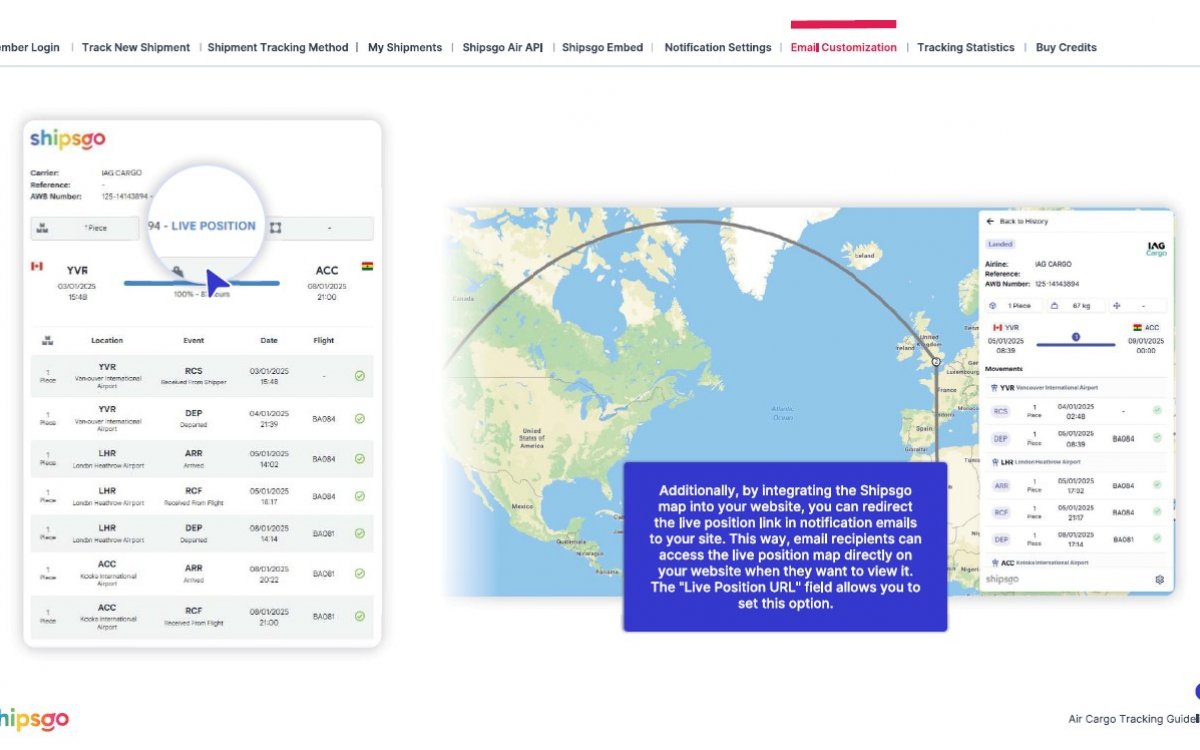How Does Air Freight Tracking Work?
Air freight tracking works by using the Air Waybill (AWB) number, integrated tracking platforms, and advanced technologies like GPS, RFID, and IoT sensors to monitor a shipment's journey from origin to destination. Data is gathered at various checkpoints, such as airports and during transit, then transmitted to online platforms for real-time updates on location, status, and estimated arrival times.
Key components of air freight tracking:
- Air Waybill (AWB):
This document provides a unique tracking number for the shipment and serves as a contract of carriage between the shipper, airline, and consignee.
- Tracking Technologies:
- GPS: Provides real-time location data for the shipment.
- RFID/Barcodes: Scans at various points in the supply chain capture and transmit the location and status of the cargo.
- IoT Sensors: Placed on cargo containers to provide real-time data on location and environmental conditions (like temperature and humidity).
- Tracking Platforms:
These online systems collect data from various sources and provide stakeholders with a centralized, user-friendly platform to view real-time shipment information.
- Data Integration:
Modern systems integrate with airlines and freight forwarders through APIs (Application Programming Interfaces) and EDI (Electronic Data Interchange) to pull all tracking data into one place.
How the process unfolds:
- 1. Data Entry:
When cargo is scheduled, an AWB is issued with a unique tracking number.
- 2. Scanning and Monitoring:
Throughout the journey, the cargo is scanned using barcodes or RFID, and IoT devices provide continuous location and condition data.
- 3. Information Transmission:
Data from scanners and sensors is transmitted to a central system for storage.
- 4. Real-Time Updates:
The tracking platform processes this information to provide real-time updates on the shipment's location, status (e.g., in customs), and estimated time of arrival (ETA).
- 5. Visibility and Management:
Shippers and other stakeholders can access this information online to monitor the shipment's progress, anticipate delays, and manage their supply chain more effectively.
